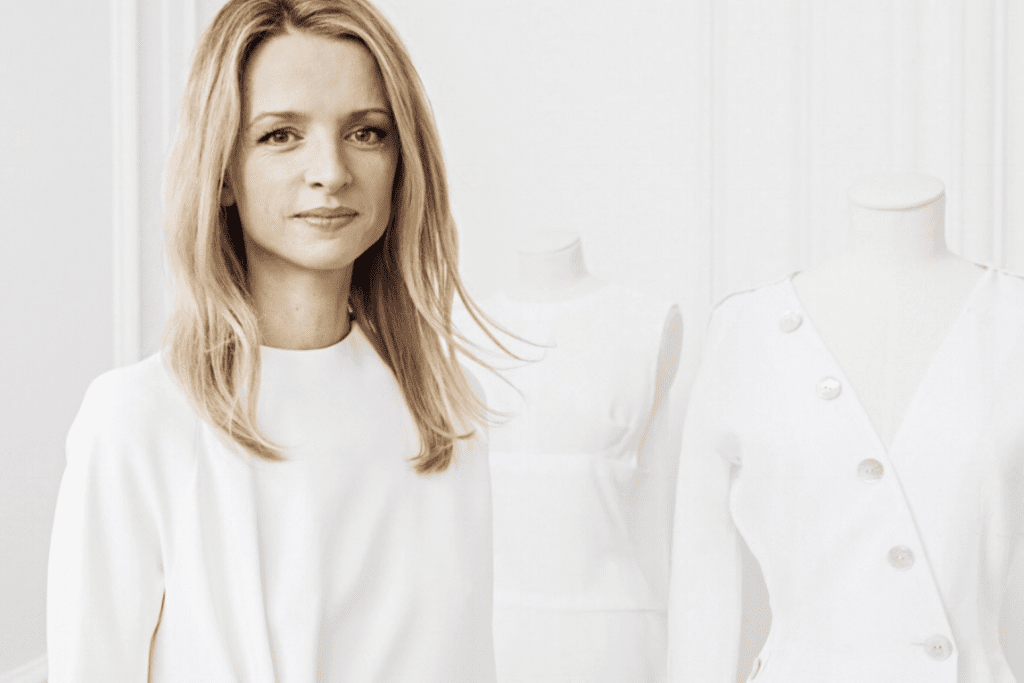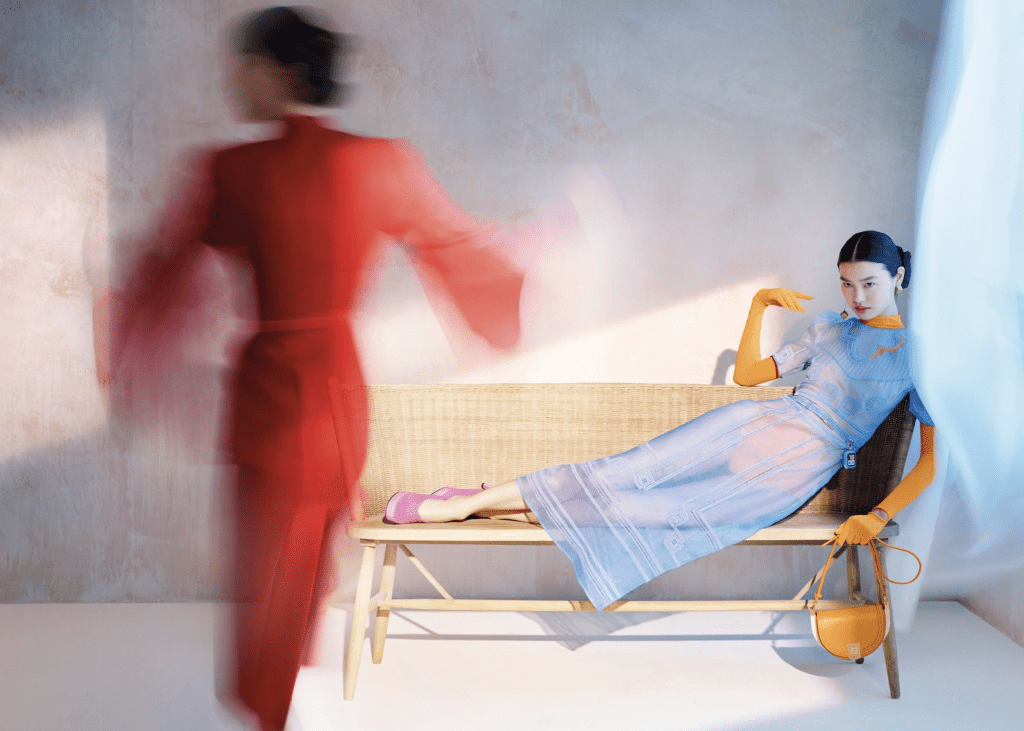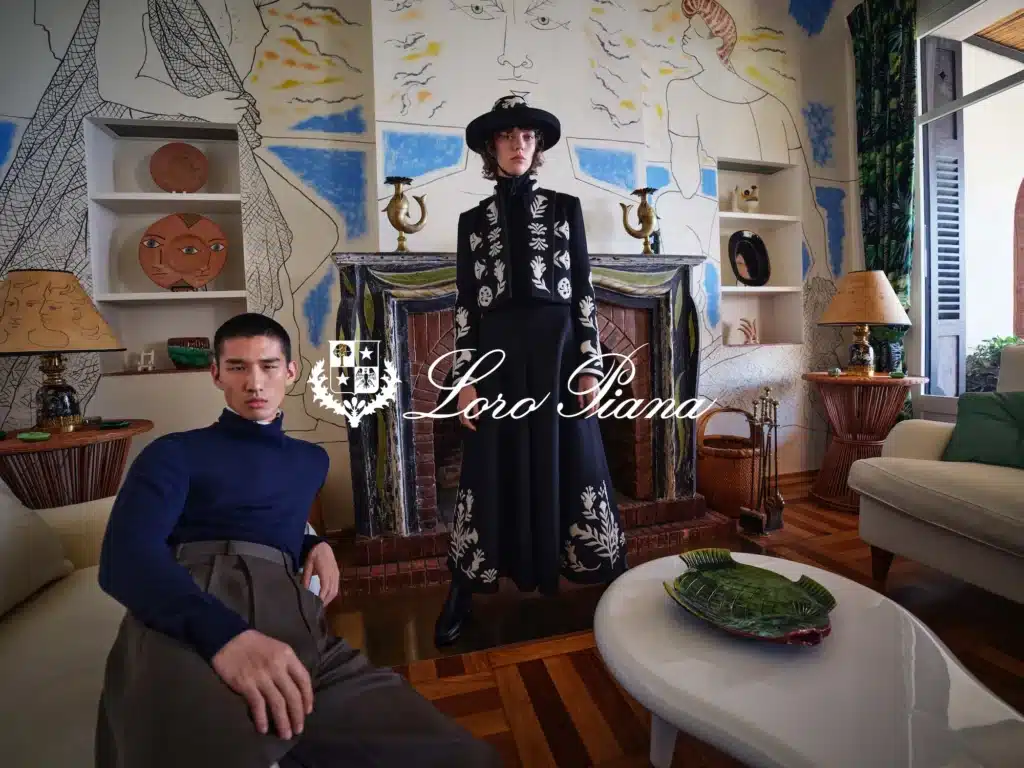LVMH Moët Hennessy Louis Vuitton recently welcomed another brand onto its roster of investments. The luxury conglomerate, which plays parent to Louis Vuitton, Givenchy, Celine, Marc Jacobs, and Kenzo, among other fashion houses, has taken a minority stake in Paris-based jewelry brand, Repossi. The recent investment largely mirrors a number of others. Consider the firm’s stake in the Nicholas Kirkwood brand, Italian design brand Marco de Vincenzo, and Loewe creative director Jonathan Anderson’s London-based eponymous label. These were spearheaded by Delphine Arnault, who joined LVMH in 2000, working with John Galliano on his eponymous label, and has been quietly working her way up since.
Writing about the company’s recent acquisition, the New York Times’ fashion director, Vanessa Friedman, stated: “It seems to me that it’s pretty significant that, despite her official role as part of Louis Vuitton, Ms. Arnault was the executive who represented LVMH in the Repossi announcement, not Antonio Belloni, the group’s managing director with official responsibility for the jewelry division. The statement suggest that Ms. Arnault was the driving force behind the decision to invest in Repossi, and highlights her growing prominence as a talent spotter — and as an acquirer.”
Yes, the guiding force behind many of LVMH’s recent investments, Delphine, who is not only brilliant, but tall, strikingly beautiful, and unmatchedly poised, joined the LVMH board of directors in 2003 (and serves on the board of Christian Dior, as well as the individual boards of Pucci, Loewe and Céline).
Since, she has proven a strong force for the luxury conglomerate of which her father, Bernard Arnault, is the chairman and CEO. Delphine, 40, currently serves as executive vice president of Louis Vuitton, and stands to take over the role of head of LVMH, along with her brother, Antoine Arnault, who currently serves as CEO of Berluti and chairman of Loro Piana. Interestingly, both siblings – Arnault’s oldest children – have largely managed to stay out of tabloid fodder that tends to plague famous families.
Writing for the Financial Times last year, Jo Ellison described Delphine as follows: “Despite her height and stature, Arnault shrinks from media attention, approaching interviews as cautiously as one might an electrified fence. Perhaps her reluctance is hard learnt. There was lavish press coverage when she married Alessandro Vallarino Gancia, heir to an Italian wine fortune, in 2005 – she wore a dress designed by John Galliano and Karl Lagerfeld took the photos.
But her divorce five years later and her subsequent relationship with tech billionaire Xavier Niel have been extremely private. She declines to confirm whether or not Niel is the father of her daughter, or even her daughter’s name.”
Her brother Antoine, 37, is the more press-friendly of the two. He started in the advertising department at Louis Vuitton and worked his way up to head of communications before becoming CEO at Berluti and then also Loro Piana, as well as serving on the board of LVMH. Yet, with the exception of articles dedicated to his dalliances with girlfriend, supermodel, Natalia Vodianova, with whom he has a young son, or his penchant for poker (he is reportedly a world-class player), or his apparent love of karaoke (as he told Time magazine several years ago), Antoine has also served largely as a quiet force within the family business.
Ms. Aranult is increasingly playing a less shadowy role – at least when it comes to the family business. For instance, in addition to spearheading the conglomerate’s latest round of investments, she championed Nicolas Ghesquière, formerly of Balenciaga, as the successor for Marc Jacobs at Louis Vuitton, where she serves as executive vice president. Before that, she had a strong hand in the appointment of Raf Simons as creative director for Christian Dior. (“Delphine will never claim credit for bringing Simons onboard, of course.
She instinctively avoids the spotlight. And yet she has grown into an increasingly important presence at the legendary couture house,” the Wall Street Journal stated in 2013. “She was the one who argued for Raf, when there were a lot of other options,” says Antoine).
Moreover, Delphine, who W magazine coined as “Fashion’s First Daughter,” almost singlehandedly launched the LVMH Young Fashion Designer Prize, an initiative aimed at fostering emerging design talent. As noted by WWD last year, “The contest [which will return for a third season this year] has galvanized the industry around the challenges of upstart fashion businesses, and attracted invaluable attention to [each year’s] 30 semifinalists,” which are subsequently narrowed down to twelve and then two special prize winners, and the LVMH Prize winner.
The industry publication went on to liken the smart businesswoman to her father: “Very much in the mold of her father, Delphine Arnault delights in nurturing the creative sparks that fuel the industry, following design ideas through the multiple steps until they reach the sales floor.”
Much like her father, Delphine, who was educated at the EDHEC Business School in Lille and the London School of Economics, is practical when it comes to fashion design. When asked to compare herself to her father, she says: “I think I’m very discreet, like him, but it’s hard to compare. He’s a visionary who transformed the fashion industry. He’s very good in finance, and he also has this very creative side. When you show him a collection of handbags, he knows immediately which one is going to sell.”
Another similarity between Arnault and her father? A mutual love of art. She is a regular visitor to the studios of various contemporary artists, especially those based in Los Angeles. When asked if she shares her father’s appetite for art collecting, she says with a laugh: “I buy a few works. I wouldn’t call it a collection.”
As for her interest in fashion, she says that it is the business side that fascinates her most. Hence her belief that “success lies in the combination of both talent and business savvy, and that the magic comes through partnership between both. It’s important to see both sides, the business and the creativity.”
Her business acumen was certainly built in her years climbing the ranks at LVMH brands and at Christian Dior, the latter of which technically does not fall under the LVMH umbrella, despite widespread belief otherwise. Arnault initially began at Dior in 2001 as a commercial director, and joined the executive committee of the house, alongside Dior chief executive officer Sidney Toledano.
She ultimately rose to become Dior’s deputy managing director in 2008, second-in-command to chief Toledano, and had a strong hand in sustaining the brand during John Galliano’s ouster in 2012 and the growing it quite remarkably during Raf Simons’s tenure. She “grew up” at Dior, she says: “I was 26 when I went there, and I left at 38.” Arnault has since departed from her father’s most coveted brand and landed at his most profitable: Louis Vuitton, where she is has purview over its broad array of businesses, including leather goods, women’s and men’s ready-to-wear, watches and jewelry.
She describes her managerial approach as “quite calm.” It is probably also fair to say she is undeniably hardworking. “Sometimes I had to push her out of the office,” says Toledano. “I left on vacation at the beginning of last August, and she was still in Paris, two days before giving birth, sending me emails. I said, ‘Delphine, stop it!'”
Not surprisingly, the fashion press has taken to pitting the two eldest Arnault siblings against one another, as it tends to do, in regards to who will succeed their 66-year-old father in what is arguably the fashion world’s most powerful job. As W magazine noted last year, Delphine’s “appointment at Vuitton [in 2013] revived chatter that she may have the edge as heir apparent, though her father’s ultimate plans are anybody’s guess.”
While we do not know who of the siblings will take the reigns most significantly when Bernard Arnault chooses to step down, we do know one thing. Interestingly, as Friedman also noted in her article on the Repossi investment, a strategic shift by LVMH is underway, largely thanks to Delphine. According to Friedman, LVMH is shifting “from a global sector domination machine to a kinder, friendlier giant, an approach that has been shaped by Ms. Arnault, as well as her brother, Antoine Arnault, and one that it increasingly seems may define the group for the future.”
It is worth noting that it is arguably not terribly difficult to be considered a “kinder, friendlier” giant than the LVMH we have known under the director their father, who in his role as chairman of LVMH, has been described by the press as “ruthless,” as “able to exploit,” as “famously litigious,” and as “the wolf in cashmere clothing.”
However, regardless of what the press decides to print, Thiery Breton, former finance minister and executive chairman of Atos, the French information technology company, put it quite well in 2012, saying: “Bernard Arnault is without doubt the greatest French – and possibly European – entrepreneur.”
And the siblings appear to take this “kinder, friendlier” approach to heart. Speaking to the Wall Street Journal in 2013, Arnault said of himself and his sister: “We talked about how we needed to remain close, even in difficult times, that our individual destinies would have to take second place to what my father created. We’re extremely respectful of that strategy. Many companies have exploded because the heirs couldn’t agree.”














